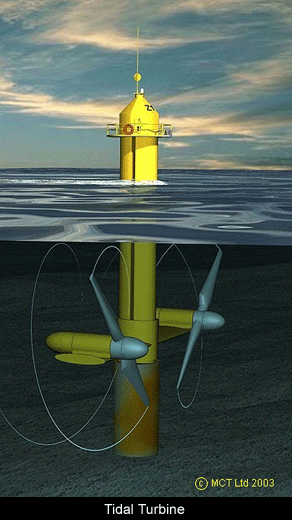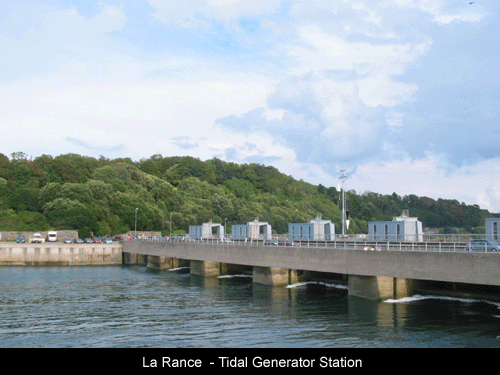
There is little doubt that the energy potential of tides is huge. The largest power plant is the La Rance station in France which generates a whopping 240 megawatts (MW)of power. The idea of constructing a power plant on the La Rance dates to Gerard Boisnoer in 1921. The site was attractive because there is a large average range between low and high levels (8 metres, with a maximum equinoctial range of 13.5 metres).
In spite of the high cost of the La Rance project, the plant’s costs have now been recovered, and electricity production costs are lower than for nuclear power generation. (18 Euro cents per kWh, versus 25 per kWh for nuclear). However, the barrage has caused progressive silting of the Rance ecosystem. Sand-eels and Plaice have disappeared, though Sea bass and cuttlefish have returned to the river. There are only two other plants operating worldwide, one being the 20MW Annapolis station in Nova Scotia, and a small 0.5MW plant in Russia.

Tidal power schemes do not produce energy 24 hours a day. A conventional design, in any mode of operation, would produce power for 6 to 12 hours in every 24 and will not produce power at other times. As the tidal cycle is based on the period of rotation of the Moon (24.8 hours) and the demand for electricity is based on the period of rotation of the earth (24 hours), the energy production cycle will not always be in phase with the demand cycle. This causes problems for the electric power transmission grid, as capacity with short starting and stopping times (such as hydropower or gas fired power plants) will have to be available to alternate power production with these power schemes.
The less intrusive plants utilising kinetic energy from current flow rather than potential energy of barrage dams would appear to be more environmentally friendly and sustainable in the long term.
